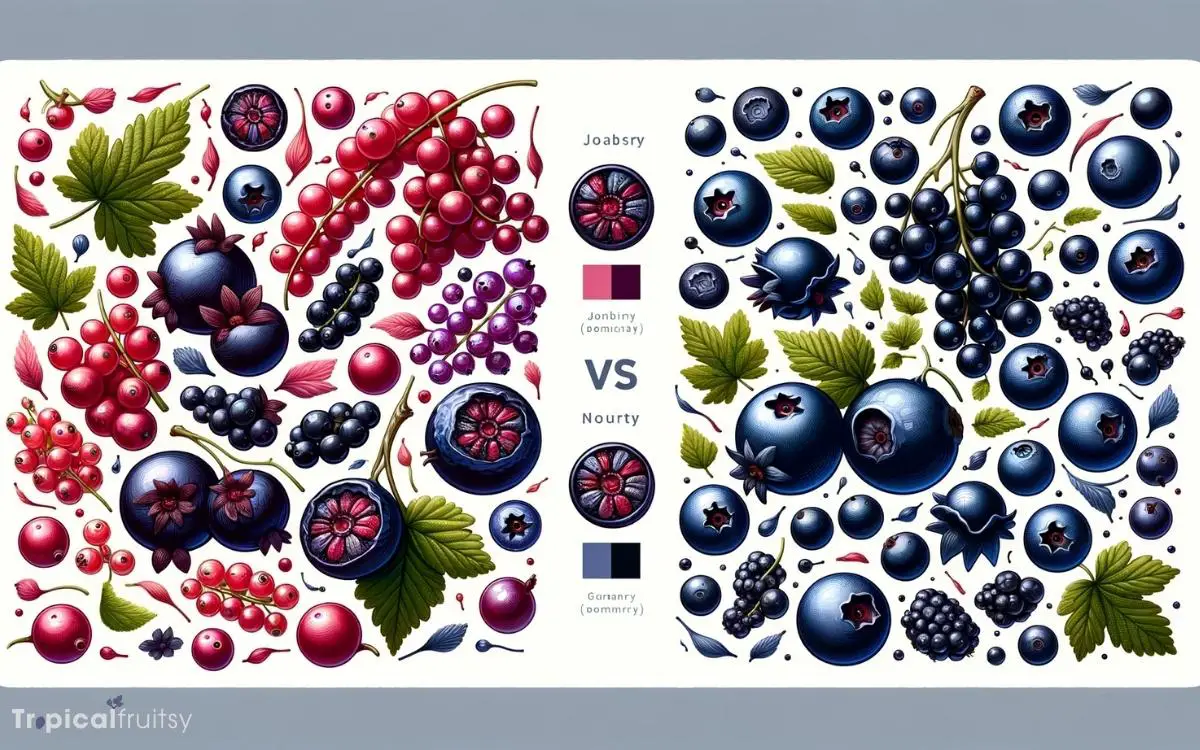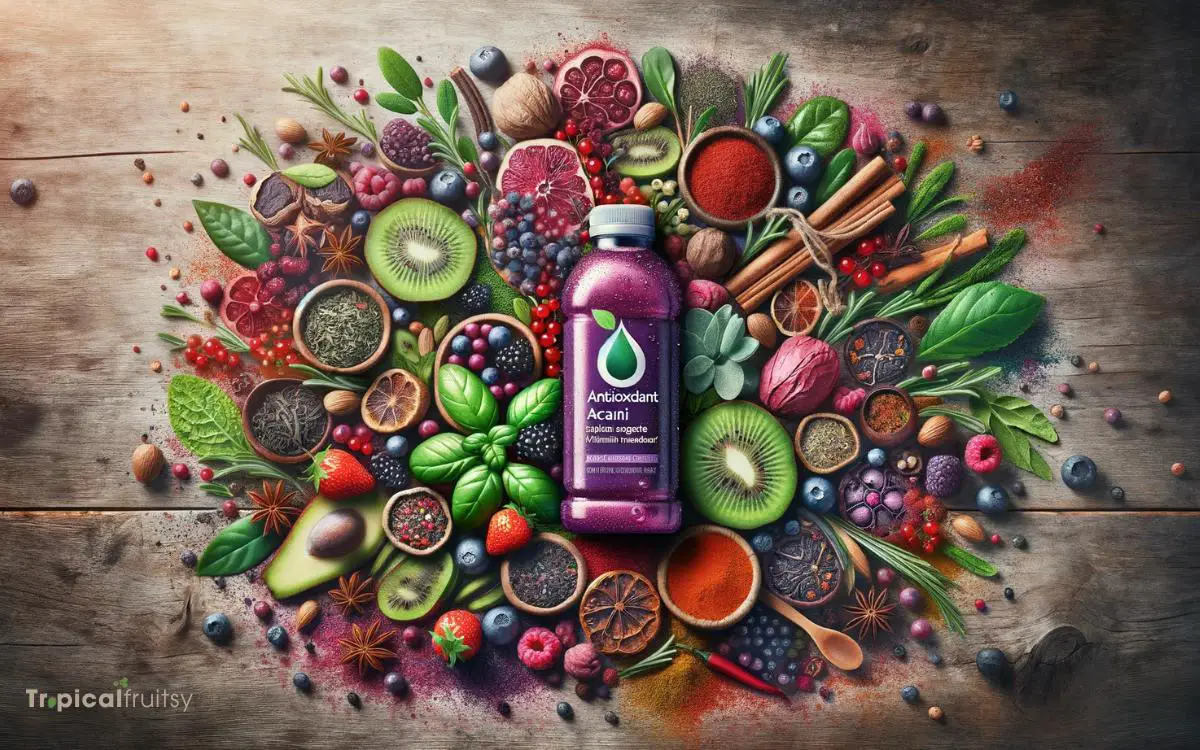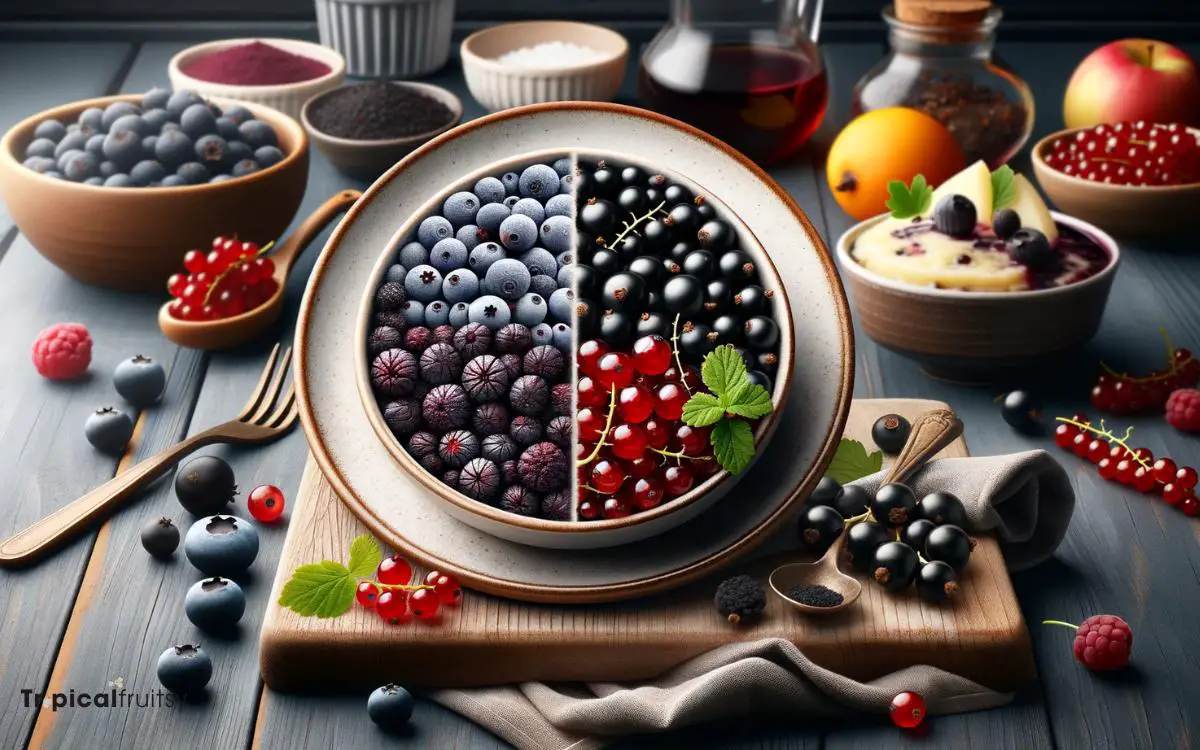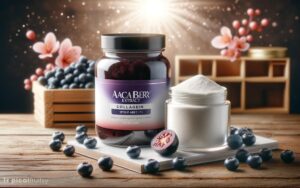Acai Berry Vs Black Currant: Explore Nutritional Showdown
Acai berries and black currants are both nutrient-dense fruits with unique health benefits. The acai berry is a South American fruit known for its high antioxidant content, especially anthocyanins. It also contains healthy fats and dietary fiber.
Black currants, on the other hand, are rich in vitamin C, boasting four times the amount found in oranges.
They also offer a good mix of vitamins, minerals, and antioxidants. These properties make both fruits highly sought after for maintaining a healthy diet and lifestyle.
Acai Berry:
Black Currant:
Both fruits can be consumed fresh or used in various culinary applications, such as smoothies, yogurts, and desserts.
While acai berries are often found in freeze-dried or powdered form outside of their native region, black currants are more commonly available fresh or as preserves in Europe and Asia.

Key Takeaway
Comparing Acai Berry and Black Currant based on various attributes
| Attribute | Acai Berry | Black Currant |
|---|---|---|
| Scientific Name | Euterpe oleracea | Ribes nigrum |
| Family | Arecaceae | Grossulariaceae |
| Origin | Amazon Rainforest | Europe and Asia |
| Appearance | Small, dark purple berries | Small, dark purple berries |
| Flavor | Sweet and slightly tart | Tart and slightly sweet |
| Nutritional Content | High in antioxidants, fiber, healthy fats | Rich in vitamin C, vitamin K, and anthocyanins |
| Health Benefits | Potential for heart health, weight loss, and anti-inflammatory effects | Supports immune system, eye health, and cardiovascular health |
| Culinary Uses | Smoothie bowls, juices, and supplements | Jams, jellies, desserts, and beverages |
| Availability | Widely available as frozen pulp or supplements in health stores | Commonly available fresh, frozen, or as products like juices and jams |
| Environmental Impact | Concerns about sustainability due to high demand | Grows in temperate regions, less impact on the Amazon Rainforest |
| Price | Often expensive due to importation and processing | Generally more affordable and readily available |
Origin and History
The acai berry, native to the rainforests of South America, has a rich history of use by indigenous tribes.
Revered for its nutritional value, it has been consumed for centuries as a staple food, providing essential nutrients and antioxidants.

The black currant, on the other hand, originates from the temperate parts of central and northern Europe and northern Asia, with cultivation records dating back to the 11th century.
Similarly, black currants were historically valued for their vitamin C content and were used to prevent scurvy.
Both fruits have evolved from traditional use to modern-day superfoods, increasingly recognized for their health-promoting properties.
As we delve deeper into these berries’ attributes, a nutritional comparison will further illuminate the distinct benefits they offer to health-conscious consumers.
Nutritional Comparisons
While both acai berries and black currants are celebrated for their historical uses, it is their contrasting nutritional profiles that set them apart in contemporary health discussions.
Acai berries are notable for their high-fat content, particularly heart-healthy oleic acid, and also contain fiber and various essential amino acids.

Black currants, on the other hand, boast an impressive vitamin C content, greatly surpassing that of acai, and are rich in potassium, which is vital for maintaining healthy blood pressure levels.
Both fruits are low in calories and contain valuable antioxidants, but the specific types and concentrations differ, which influences their health benefits.
This leads us to consider the detailed antioxidant properties of each fruit in our forthcoming discussion.
Antioxidant Properties
Examining their antioxidant properties further differentiates acai berries, with their unique anthocyanin profile, from black currants, which are abundant in both anthocyanins and vitamin C with potential anti-inflammatory effects.
The dark purple pigment in acai berries is attributed to their high anthocyanin content, which is a type of antioxidant that supports cellular health by combatting free radicals. Studies suggest that these compounds may play a role in heart health and cognitive function.

Meanwhile, black currants provide a wider spectrum of antioxidant activity due to the synergy between their anthocyanins and high levels of vitamin C, which is known for its immune-boosting properties. This combination may offer a broader defense against oxidative stress.
Moving forward, let’s delve into how these potent antioxidants translate into tangible health benefits explored in the next section.
Health Benefits Explored
Investigating the health implications of acai berries and black currants reveals a spectrum of benefits ranging from cardiovascular support to enhanced immune function.

Both fruits are densely packed with vital nutrients and bioactive compounds that contribute to overall well-being.
In the pursuit of a health-conscious lifestyle, understanding the specific advantages of these berries is imperative.
Acai Berry:
- Rich in anthocyanins, which may lower blood pressure.
- Contains plant sterols that support heart health.
- High in fiber, aiding digestive health.
- Provides fatty acids that can promote skin health.
- Antioxidant capacity helps combat oxidative stress.
Black Currant:
- Abundant in Vitamin C, crucial for immune defense.
- Potassium content may contribute to lowering blood pressure.
- GLA (gamma-linolenic acid) presence, potentially beneficial for anti-inflammatory effects.
- Dark pigmentation indicates strong antioxidant activity.
- Source of iron, beneficial for anemia prevention.
Each fruit offers a unique profile of health-promoting attributes, underscoring their respective roles in a balanced diet.
Taste and Culinary Uses
How do the distinctive flavors of acai berries and black currants translate to their culinary applications?
Acai berries, with their earthy taste reminiscent of a blend between wild berries and chocolate, are often used in smoothie bowls, juices, and energy bars, capitalizing on both their unique flavor and high antioxidant content.

Their mildly sweet and tart profile complements the nutrient-dense and health-centric dishes favored in contemporary cuisine.
Black currants, on the other hand, have a more pronounced tartness with deep, purple fruity undertones.
This makes them excellent for jams, jellies, and syrups that enrich desserts and savory sauces, often enhancing dishes with vitamin C and anthocyanins.
Both fruits offer versatile taste profiles that align with a health-conscious culinary approach, allowing for innovative uses in various recipes.
Availability and Price
The availability and price of acai berries and black currants vary widely due to factors such as seasonality, cultivation regions, and demand.

Consumers seeking these nutrient-rich fruits should consider:
- Acai berries are primarily harvested in the Amazon rainforest and are often available frozen or as a puree outside of South America.
- Black currants have a more temperate range and are common in Europe and parts of North America.
- Seasonal fluctuations can affect availability and price, with costs typically higher out of season.
- Demand for superfoods can drive up prices, especially for organic varieties.
- Local market trends and import taxes can also influence the retail cost of both fruits.
Understanding the economic and distribution nuances of these berries is crucial for informed consumption.
Next, we will explore the environmental impact of cultivating and distributing acai berries and black currants.
Environmental Impact
Both acai berry cultivation and black currant farming have quantifiable environmental footprints that vary according to agricultural practices and supply chain logistics.
Acai berries, predominantly grown in the Amazon, can contribute to deforestation and biodiversity loss if not harvested sustainably.

However, when managed properly, acai can also support forest preservation by providing economic alternatives to destructive practices.
Conversely, black currant production, primarily in Europe, often uses conventional agricultural methods that may involve pesticides and fertilizers, potentially affecting soil health and water quality.
In contrast, organic black currant farming minimizes these impacts, though it may yield less fruit per hectare, posing a trade-off between environmental benefits and crop productivity.
Consumers concerned about nutrient-rich diets and ecological welfare should consider the origin and cultivation methods of these berries.
Is Black Currant a Better Option Nutritionally Than Maqui Berry?
When comparing acai berry vs maqui berry, black currant emerges as a better option nutritionally. It contains more vitamin C and antioxidants than maqui berry, making it a superior choice for overall health. Incorporating black currants into your diet can provide numerous nutritional benefits.
Which Berry Has More Nutritional Value: Acai or Maqui?
The acai berry vs maqui berry battle has sparked a debate about which one is more nutritious. Acai berries are high in antioxidants, while maqui berries are known for their anti-inflammatory properties. Both are nutritious, but acai berries typically contain more healthy fats, while maqui berries have more vitamin C.
Making the Right Choice
Consumers aiming to balance nutritional benefits with environmental consciousness must carefully evaluate their options when choosing between acai berries and black currants.

Both offer distinct nutrient profiles and potential health advantages, but the choice ultimately hinges on individual dietary needs, environmental impact considerations, and personal taste preference.
To aid in this decision, consider the following:
- Nutrient Density: Acai berries are rich in antioxidants, particularly anthocyanins, while black currants provide a high vitamin C content.
- Sustainability: Assess the ecological footprint, including how and where the berries are grown and transported.
- Availability: Local availability can influence freshness and nutrient preservation.
- Culinary Versatility: Consider how each berry fits into your diet and cooking practices.
- Allergies and Dietary Restrictions: Ensure the chosen berry aligns with any personal health considerations.
Informed choices align with health objectives and ethical values, fostering a sustainable and beneficial diet.
Conclusion
Both acai berries and black currants boast bountiful benefits, offering a cornucopia of crucial nutrients and potent antioxidants that contribute to comprehensive health enhancements.
While their culinary applications can cater to varying palates, their availability and environmental considerations may sway consumer choice.
Ultimately, selecting between these superfruits should be steered by individual health objectives, dietary preferences, and ecological ethos, ensuring an informed decision that supports both personal well-being and planetary prosperity.






